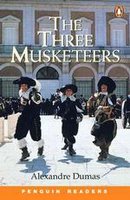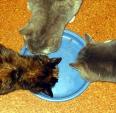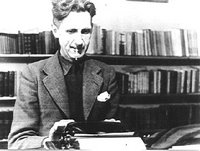There is a bit of a tempest in a teapot going on over at ACOR, so I thought I might comment here at some length about EGCG, the green tea extract that has created a buzz in the CLL community for the past couple of years. (Alas, the buzz is not always pleasantly psychotropic.)
This all started when researchers at the Mayo Clinic found that EGCG could kill CLL cells in vitro, wh ich means in a test tube. They thought the results were encouraging enough to justify conducting a clinical trial to test its effects in vivo, which means in people. In this they received the support of CLL Topics, the nonprofit educational and patient-advocacy organization, which contributed patient donations to help get the trial started. Chaya Venkat of Topics wrote some articles explaining the science of how EGCG is thought to work against CLL, and Topics has taken a generally positive outlook on the subject.
ich means in a test tube. They thought the results were encouraging enough to justify conducting a clinical trial to test its effects in vivo, which means in people. In this they received the support of CLL Topics, the nonprofit educational and patient-advocacy organization, which contributed patient donations to help get the trial started. Chaya Venkat of Topics wrote some articles explaining the science of how EGCG is thought to work against CLL, and Topics has taken a generally positive outlook on the subject.
Patients, looking for something to do at home to combat CLL, began taking EGCG in its myriad forms: drinking green tea, ingesting capsules and tablets, sucking on EGCG-laden candies. Everything but snorting lines of it.
These clinical trials of one have reported different anecdotal results in the online patient forums: some people say it has knocked their lymphocyte count down, some say it has helped steady it, some say it has done little or nothing. As a rule, the anecdotal reports that do claim progress show results that have been incremental, not earthshattering. Dosages have been all over the map since no one knows what the optimal dosage is.
The trial now underway at Mayo, which is co-sponsored by CLL Topics and the National Cancer Institute, is designed to determine that. The trial is a Phase I/Phase II study with an expected total enrollment of 69 patients. These things tend to take time, and we will probably not know the results for another year or so.
In the meantime, Mayo researchers have just issued a brief report in Leukemia Research that, while unrelated to the trial in progress, provides some encouraging, albeit anecdotal, information. Here it is, written in Mayo-ese:
Clinical effects of oral green tea extracts in four patients with low grade B-cell malignancies.Shanafelt TD, Lee YK, Call TG, Nowakowski GS, Dingli D, Zent CS, Kay NE.Mayo Clinic College of Medicine, Division of Hematology, Mayo Clinic, 200 First Street SW, Rochester, MN 55905, USA.Green tea or its constituents have long been touted as a health promoting substance including claims it may have cancer prevention properties. We previously reported the in vitro ability of one tea polyphenol, epigallocatechin gallate (EGCG), to induce apoptotic cell death in the leukemic B-cells from a majority of patients with chronic lymphocyti c leukemia (CLL). After the publication of our findings many patients with CLL and other low grade lymphomas began using over-the-counter products containing tea polyphenols despite the absence of evidence to suggest clinical benefit, definition of possible toxicities, or information on optimal dose and schedule. We have become aware of four patients with low grade B-cell malignancies seen in our clinical practice at Mayo Clinic who began, on their own initiative, oral ingestion of EGCG containing products and subsequently appeared to have an objective clinical response. Three of these four patients met criteria for partial response (PR) by standard response criteria. Although spontaneous remission/regression is occasionally observed in individuals with low grade B-cell malignancies, such events are rare. Several patients presented here had documented steady clinical, laboratory, and/or radiographic evidence of progression immediately prior to initiation of over-the-counter green tea products and then developed objective responses shortly after self-initiating this therapy. Such anecdotes highlight the need for clinical trials of tea polyphenols to define the optimal dosing, schedule, toxicities, and clinical efficacy before widespread use can be recommended. An NCI sponsored phase I/II trial of de-caffeinated green tea extracts for patients with asymptomatic, early stage CLL opened at Mayo Clinic in August 2005.
c leukemia (CLL). After the publication of our findings many patients with CLL and other low grade lymphomas began using over-the-counter products containing tea polyphenols despite the absence of evidence to suggest clinical benefit, definition of possible toxicities, or information on optimal dose and schedule. We have become aware of four patients with low grade B-cell malignancies seen in our clinical practice at Mayo Clinic who began, on their own initiative, oral ingestion of EGCG containing products and subsequently appeared to have an objective clinical response. Three of these four patients met criteria for partial response (PR) by standard response criteria. Although spontaneous remission/regression is occasionally observed in individuals with low grade B-cell malignancies, such events are rare. Several patients presented here had documented steady clinical, laboratory, and/or radiographic evidence of progression immediately prior to initiation of over-the-counter green tea products and then developed objective responses shortly after self-initiating this therapy. Such anecdotes highlight the need for clinical trials of tea polyphenols to define the optimal dosing, schedule, toxicities, and clinical efficacy before widespread use can be recommended. An NCI sponsored phase I/II trial of de-caffeinated green tea extracts for patients with asymptomatic, early stage CLL opened at Mayo Clinic in August 2005.
What does this tell us? That some people at Mayo think there may be something to all this, but that we need to wait for clinical trial results to know for sure.
This most recent abstract has led to a bit of a kerfluffle among patients, a few of whom see it as questionable science offering hope where little is justified. While I disagree with them, they are right in that we should hold researchers to the highest standards of evidence, to the proper controls and precautions that Dr. Terry Hamblin has spoken about in several venues, including ACOR and CLL Topics.
But this one abstract reports news that is clearly described as anecdotal; the researchers claim nothing more than that, and they use their observations to reinforce the need for the trial. Mayo is a reputable, straight-arrow institution and will in time issue a full report on its trial. And Mayo is not known for constructing Potemkin villages when it comes to scientific information. I would expect the trial to be competently conducted and the results to be completely reported. When those results are published, we can parse them, and the trial, all we like.
In the meantime, there appears to be little harm in drinking green tea or taking E GCG capsules or candies (though I have to wonder about the green tea potato chips pictured on the right). It won't cost you much, and it will turn out to be money well spent if Mayo comes up with something. If they don't, little is lost (except perhaps for some weight, since green tea seems to have that effect in some people).
GCG capsules or candies (though I have to wonder about the green tea potato chips pictured on the right). It won't cost you much, and it will turn out to be money well spent if Mayo comes up with something. If they don't, little is lost (except perhaps for some weight, since green tea seems to have that effect in some people).
My guess -- and this is only a guess, but I'll wager a pot of Japanese gyokuro on it -- is that the results will show some positive effects in some early stage patients (and perhaps little effect in some others).
Whatever the results, EGCG will not prove to be the long-awaited cure. It may, however, join the arsenal of weapons we use to get at CLL cells, one made especially attractive by its ease of use, availability, and extremely low toxicity.
Sometimes I think that, in our hope for progress against CLL, we expect too much of a drug, and we become upset when the results do not match our expectations. I certainly understand this frustration, as all sorts of "promising" things have come down the pike over the years, only to disappoint us. But something that might lead to a partial response in some patients -- especially a low-toxicity something -- can still be of great benefit, even if it is not exactly the cure we hope for.
Dr. Hamblin once said that the war against CLL is a war of attrition, that it will be won incrementally. By this, I think, he is also telling us that it is unlikely that there will be a magic bullet anytime soon. From what I can see of the CLL landscape, I agree with him.
So, my advice is: Keep your expectations reasonable.
And as to the Mayo trial: Watch and wait. RESOURCES
The Mayo EGCG trial, explained in easy-to-understand terms from the Mayo website:
http://tinyurl.com/78ktd
The Mayo EGCG trial, explained in greater detail, from the NCI:
http://www.clinicaltrials.gov/ct/show/NCT00166335?order=1
Everything you've always wanted to know about the Mayo EGCG trial, including an interview with the researchers, reported in CLL Topics here.
UPDATEHere it is, almost two years after I wrote this post, and we have an inkling of some news from Mayo. According to Chaya Venkat, who wrote to me today, "The phase I of the trial is completed, and new recruitment is suspended until the results of the phase 1 are reported and they reopen for the phase 2 stage of the trial. To the best of my knowledge, the results of the phase 1 have been quite encouraging."
Anecdotally, from reports in various patient forums, things are about the same as when I wrote the original post. A few patients seem to have responded really well, some may have gotten a small benefit, some have found no effect, and there have been rare reports of a suspicious rise in lymphocyte count after taking it. A few people have also reported that it has appeared to lower their platelet count, and I recall reading somewhere that it can act as a blood thinner. The platelet issue is one reason I stopped taking it. I have had the stuff in many incarnations and in large doses and it seems to do little for me one way or the other. But I see no harm in anyone trying it; you might be one of the lucky ones. An interesting anecdotal observation by someone I respect is that it appears to work better on those who have not been treated than on those who have, and this would include Rituxan. Like everyone, I anxiously await Mayo's report on Phase 1. -- November 20, 2007
 be, by and large, friendly and accommodating. Traveling on a frayed shoestring of a budget, we stayed at such places as the Grand Hotel de La Loire in Paris, which was anything but grand –- the hotel, I mean. Paris was wonderful –- romantic, beautiful, exemplary in every way but for the dog poop that littered the streets -- and our eyes still tear up at the thought of an artichoke in hollandaise sauce that we had at a café on the Ile St. Louis.
be, by and large, friendly and accommodating. Traveling on a frayed shoestring of a budget, we stayed at such places as the Grand Hotel de La Loire in Paris, which was anything but grand –- the hotel, I mean. Paris was wonderful –- romantic, beautiful, exemplary in every way but for the dog poop that littered the streets -- and our eyes still tear up at the thought of an artichoke in hollandaise sauce that we had at a café on the Ile St. Louis.


















